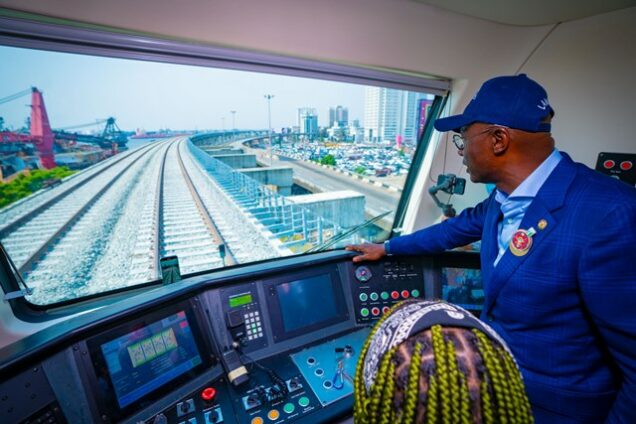Lagos pulsed with unmistakable anticipation on Monday as the long-awaited metro rail service roared to life. This initiative, which began as a vision in 1983, epitomizes resilience in infrastructural development. With the city notorious for its traffic congestion, many are hopeful that the Lagos Metro could be the answer to its transportation woes, provided it maintains punctuality.
The journey of the metro began under the administration of the late Alhaji Lateef Jakande in 1983. With all preparations in place, the dream was close to becoming a reality. Yet, a military coup led by Major-General Muhammadu Buhari paused these aspirations. It was not until 2003, two decades post the initial conception, that the torch was reignited by former governor Bola Tinubu. A color-coded rail project was introduced, the most prominent of which was the Blue Line, connecting Marina to Mile 2.
However, despite the initiation, challenges persisted. Construction started during Babatunde Fashola’s tenure and progressed in phases. Former governor Akinwunmi Ambode promised completion in 2016, but the deadline was not met. The responsibility of fulfilling this vision then fell on Governor Sanwo-Olu.
In January 2023, former President Muhammadu Buhari inaugurated the Blue Line, setting the stage for commercial operation. However, there were delays, with the launch date being rescheduled multiple times. Finally, on September 4th, 2023, the city celebrated as the trains welcomed their first passengers.
Governor Sanwo-Olu’s excitement was evident as he embarked on the inaugural journey. “I am excited, everybody on this train is excited. This is a promise made, promise kept,” he remarked. This efficiency, with trains adhering to strict timings and stops lasting no more than 90 seconds, is set to revolutionize Lagos’s transportation system.
The new metro is anticipated to ease Lagos’s infamous traffic jams significantly. With the capacity to ferry 500,000 passengers daily, hours-long journeys can now be cut down to just 15 minutes. But the Blue Line is only the beginning. Sanwo-Olu announced that the nearly complete Red Line will soon follow, along with the inauguration of essential bridges in the upcoming weeks.
Moreover, this metro doesn’t only promise faster commutes. By connecting the mainland, where the majority of residents live, with the bustling Lagos Island, the economic activity of the city is expected to surge. To ensure the metro’s sustainability, provisions have been made for its safety and security, safeguarding it from potential vandalism and offering passengers a secure environment.
In reflection, the Lagos metro’s journey, while filled with challenges, stands as a testament to determination and the power of perseverance. With such high hopes pinned on its efficiency, Lagosians eagerly await smoother commutes and a more interconnected cityscape. The ultimate test, however, will be whether the Lagos Metro consistently runs on time, delivering on all its promises.




